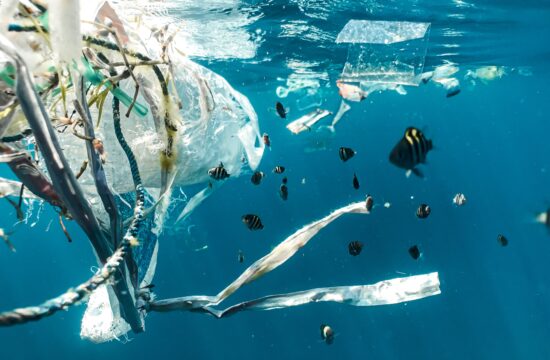
Moody's on Friday affirmed Croatia's Baa2 credit rating and changed the outlook to positive, saying that its decision reflects Croatia's fiscal strength as well as institutions and governance strength that are significantly stronger than that of rating peers.
“Croatia’s relative lack of economic diversification due to its strong reliance on tourism coupled with structural challenges related to population ageing remain constraints on its economic strength. Croatia’s moderate exposure to geopolitical and banking sector risk remain other credit constraints,” the agency said.
Moody’s decision to change the outlook to positive is driven by an increasing likelihood that Croatia’s debt burden will fall more significantly than previously expected leading to further improvements in fiscal strength.
“It is also supported by the prospect of a strengthening of Croatia’s growth potential, as well as indications of improving institutional effectiveness, a governance consideration, not least through effective implementation of the very significant package of investments and reforms under Croatia’s Recovery and Resilience Plan (RRP) which supports Moody’s assessment of Croatia’s institutions and governance strength,” the agency said.
Moody’s expects that Croatia’s debt burden will stand at 61.1% of GDP by the end of 2023, and will continue to decline to 58.3% in 2024 and 56.3% in 2025.
“At the end of 2025, this would leave the government debt-to-GDP ratio almost 15 percentage points (pps) below its pre-pandemic level of 70.9% in 2019, and more than 30 pps below its pandemic peak of 86.8% in 2020,” Moody’s said.
The projected decline of the debt-to-GDP ratio remains significantly faster and deeper than Moody’s previous expectations.
Croatia’s relatively elevated debt burden has previously been one of the main weaknesses of its credit profile, but the continued reduction of the debt-to-GDP ratio will bring Croatia more in line with its Baa-rated peers.
At the same time, Moody’s expects that Croatia’s debt affordability metrics will remain significantly stronger than most of its rating peers, as the government, despite the sharp shift in the global interest rate environment, is still refinancing much of its maturing debt at lower rates than at which it was issued.
The rapid reduction of the debt-to-GDP ratio to date has in part been driven by exceptionally rapid real GDP growth in 2021 and 2022 as the economy rebounded from the pandemic shock, as well strong nominal GDP growth in the high-inflation environment in 2022 and 2023.
Continued debt reduction will also be supported by Moody’s expectations that the government will maintain a broadly balanced primary fiscal position in coming years.
Moody’s expects that increasing demands for nominal expenditure increases on pensions and public sector wages to compensate for the impact of the inflationary shock as well as an increase in loan-funded investments under the EU’s Recovery and Resilience Facility (RRF) will drive the budget into a deficit of 1.9% of GDP in 2024 and around 1% of GDP in 2025.
Moody’s expects Croatia to record growth of somewhat below 3% in 2023 and coming years. This is significantly above Moody’s expectations for euro area growth of 0.7% and 1.1% of GDP in 2023 and 2024 respectively, and also above Moody’s growth forecasts for most of Croatia’s Central and Eastern European (CEE) peers.
The relative strength of Croatia’s economic performance can in part be attributed to an economic structure that is primarily geared towards services, in particular tourism, rather than the manufacturing sector which has been harder hit by high energy prices and the broader European economic slowdown in 2022-2023.
The agency says it can also be explained by robust consumption as wage growth has broadly kept pace with inflation, due to the tightness of the Croatian labour market. Although Moody’s believes that the scope for further growth of the tourism sector is more limited in coming years, the rating agency expects moderate growth of exports and consumption to continue supporting the growth outlook.
Moody’s believes that the main factor driving the improved growth outlook is the very substantial amount of EU investment funding available to Croatia in coming years. Following the recent revision of its national Recovery and Resilience Plan, Moody’s expects Croatia’s total Recovery and Resilience Fund (RRF) envelope will reach around 13% of 2023 GDP (around 55% of which come in the form of grants rather than loans).
Croatia’s implementation of the reform and investment projects under the RRP have so far proceeded very smoothly, the agency said.
Moody’s would upgrade Croatia’s ratings if the government debt burden will continue to fall more significantly than expected, while debt affordability is maintained. Continued, effective implementation of Croatia’s RRP would also support our assessment of Croatia’s economic as well as institutions and governance strength, thus also supporting the case for an upgrade.
Moody’s would consider changing the outlook back to stable, and in an adverse scenario, to negative if there was to be a reversal in the trend of debt reduction, accompanied by a significant loosening of government fiscal policy.
“A significant weakening of the growth outlook relative to Moody’s expectations, as well as a weakening of Croatia’s ability to effectively implement its national RRP would also support the case for a stabilization of the outlook. An increase of geopolitical risks negatively impacting the Croatian economy and public finances would also be credit negative,” the agency said.




Kakvo je tvoje mišljenje o ovome?
Budi prvi koji će ostaviti komentar!